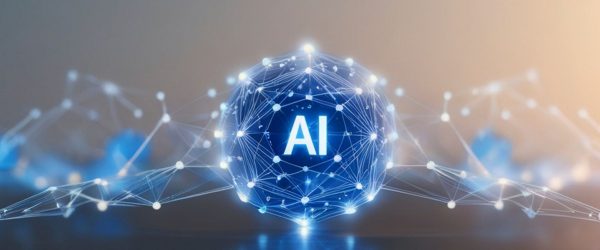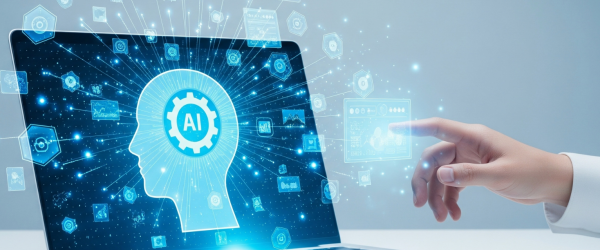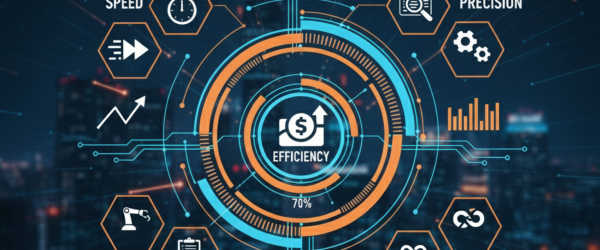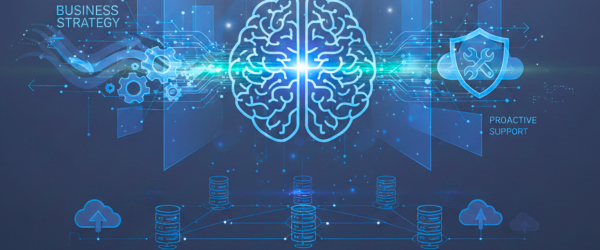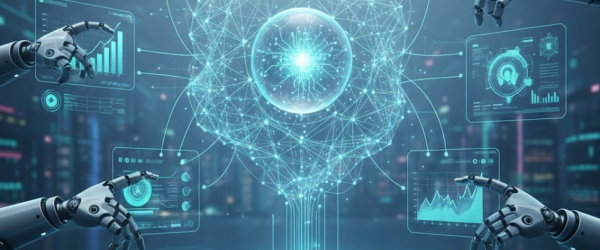In the realm of software development, the integration of generative AI tools has begun to yield significant effects. These tools offer numerous advantages, notably enhancing productivity for businesses that adopt them. According to research by McKinsey, developers can accomplish coding tasks nearly twice as quickly when utilizing generative AI.
Notably, the study revealed that while generative AI has a substantial impact on simpler coding tasks, its influence on complex ones is less pronounced. Hence, concerns regarding AI replacing developers can be dispelled. Nevertheless, there are numerous straightforward applications where AI can notably accelerate team productivity and enhance the overall developer experience.
Before delving into the specific impacts of generative AI tools, it’s essential to discuss broader methods, frameworks, and best practices for enhancing developer productivity. Generative AI serves as just one of the many tools available to developers in this regard.
Measuring and improving developer productivity
Measuring the productivity of developers, which is a subset of overall employee productivity, presents a multifaceted challenge. Traditional metrics, such as counting lines of code written or tracking hours worked, often prove inadequate in capturing the complexities of modern workflows.
These metrics may fail to accurately portray the quality or broader impact of a developer’s work, necessitating the consideration of external factors such as customer satisfaction for a comprehensive evaluation. It’s essential to understand that developer productivity encompasses more than just writing code; it involves delivering high-quality results that consistently meet customer needs while also preventing burnout, which can severely hamper productivity.
Metrics provided by DevOps Research and Assessment (DORA), including deployment frequency, lead time, and mean time to recover, offer valuable benchmarks for assessing the effectiveness of software delivery. These metrics enable engineering managers and Chief Technology Officers (CTOs) to precisely evaluate both individual and team performance.
Project management tools, such as the widely embraced Jira, play a crucial role in tracking progress, task management, and facilitating contribution analysis within software development teams. Adopting the SPACE framework—Software engineering, Productivity, Analytics, Collaboration, and Efficiency—provides a comprehensive approach to managing software development projects.
Utilizing Key Performance Indicators (KPIs) like story points and real-time productivity tools establishes benchmarks for consistently evaluating and enhancing software developer productivity.
Expanding the scope of productivity measurement beyond individual performance requires a deep understanding of team dynamics. Collaboration platforms like GitHub serve as drivers for fostering a culture of open communication, collaborative code reviews, and streamlined pull request processes.
These platforms not only facilitate knowledge sharing among team members but also create a collective environment for skill development. Introducing new features strategically and consistently delivering high-quality code not only strengthens the competitiveness of the product but also significantly contributes to overall end-user satisfaction.
DevOps has emerged as a revolutionary methodology that harmonizes development and operations practices, optimizing the efficiency of the software development lifecycle. By promoting collaboration between developers and operations teams, DevOps aims to streamline processes, reduce lead time, and increase deployment frequency. In doing so, it creates an environment conducive to continuous innovation and improvement.
DevOps effectively tackles bottlenecks and proactively manages technical debt, fostering a work environment that keeps developers content and productive.
Engineering managers play a vital role in regularly analyzing contributions and leveraging this data to integrate new tools and address any concerns related to employee experience. This approach shapes an environment that promotes developer productivity.
The adoption of the YES (Your Engineering Success) model emphasizes the significance of fostering a positive and supportive culture within the team, encouraging innovation and creativity. This comprehensive approach ensures that developer productivity is measured and optimized in a manner that enhances both individual and team performance while also nurturing the overall well-being of the development workforce.
How generative AI can help
There are a number of ways that AI can streamline development workflows. Here are some more common use cases:
Eliminating repetitive tasks
Coding frequently entails straightforward and occasionally monotonous tasks, which is precisely where generative AI tools excel. Mundane and repetitive work, such as typing out standard functions, can be accelerated with auto-complete functionalities. Platforms like OpenAI’s Codex have the capability to propose lines of code or even entire functions by interpreting natural language descriptions. Additionally, these tools can expedite code documentation by assisting developers in adhering to particular documentation formats automatically.
Natural language interfaces
Generative AI holds the potential to enable natural language interfaces for software development tools. This advancement could allow developers to interact with development environments, debugging tools, and version control systems using natural language commands. Such an approach could significantly enhance accessibility for individuals without extensive programming expertise, simplifying the development process and democratizing access to software development tools.
Code suggestion
Generative AI has the capability to assist beginners in coding by offering context-aware suggestions, explanations, and guidance as they write code. This support can significantly accelerate the learning curve for new developers, providing them with real-time assistance and enhancing their understanding of coding principles. Ultimately, this democratizes access to software development by making the process more approachable and inclusive, regardless of prior experience or background knowledge.
Code improvement
Generative AI has the capability to propose enhancements to existing code by identifying redundant or inefficient segments. This functionality significantly contributes to maintaining code quality and performance over time. By leveraging AI-generated suggestions, developers can swiftly pinpoint and rectify issues that may have been challenging to identify manually. Furthermore, these AI-driven solutions can be implemented automatically, further streamlining the code optimization process and enhancing overall efficiency in software development workflows.
Code translation
Generative AI is also capable of translating code from one programming language to another, which streamlines code conversion or application modernization projects. For instance, it can facilitate updating legacy applications by transforming code from languages like COBOL to Java. This capability greatly accelerates the process of migrating software systems to newer technologies, reducing manual effort and minimizing the potential for errors during the transition.
Code testing
Generative AI can be utilized to automatically generate test cases, a valuable capability in software testing. By analyzing code, it can produce test inputs, thereby enhancing test coverage and identifying potential issues at an early stage of the development process. This automation not only streamlines the testing phase but also contributes to improving the overall reliability and robustness of the software being developed.
Bug detection
Generative AI can support software development teams by analyzing extensive codebases, aiding in the identification and even automated fixing of bugs. This capability contributes to the creation of more robust and reliable software while also accelerating development cycles. By leveraging AI-powered bug detection and resolution, teams can streamline their debugging processes, resulting in higher-quality software products delivered more efficiently.
Personalized development environments
Generative AI holds the potential to develop personalized development environments tailored to individual developer preferences and coding styles. Such customization would not only enhance productivity but also create a more comfortable coding experience for programmers. By leveraging AI to adapt development environments to the specific needs and preferences of each developer, teams can optimize workflow efficiency and foster a more enjoyable and productive coding experience.
Enhanced Documentation
Generative AI can aid engineering teams by generating documentation that summarizes code functionalities, explains algorithms, and provides context. This capability is invaluable for maintaining clear and up-to-date project documentation, ensuring that developers and stakeholders have comprehensive insights into the project’s structure and functionality. By automating the documentation process, teams can save time and effort while ensuring that project documentation remains accurate and accessible for future reference.
How generative AI for coding software works
Generative AI in coding operates by utilizing machine learning models trained on extensive datasets of code. These models are equipped with the ability to comprehend the structure and syntax of various programming languages. Through this understanding, they can generate code, offer suggestions, and perform tasks that assist developers in their coding endeavors.
Pre-training the model
Generative AI models undergo pre-training on extensive datasets comprising diverse examples of code written in multiple programming languages. Throughout this pre-training phase, the model learns to anticipate the subsequent word or token in a sequence of code, drawing upon the context provided by preceding words. Through this iterative process, the model assimilates the syntax, semantics, and patterns characteristic of different programming languages, enhancing its ability to generate code effectively.
Understanding context
Upon receiving a coding prompt or query, the generative AI model interprets the input and leverages its acquired knowledge to comprehend the context and intent. Through its training, the model has learned to discern the relationships among various code elements, including variables, functions, and control structures. Drawing upon this understanding, the model generates code that is both relevant to the given prompt and syntactically correct within the specified programming language. This process enables the generative AI model to provide accurate and contextually appropriate coding solutions.
Code generation
Utilizing its learned patterns and contextual comprehension, the generative AI model produces code snippets as output. These generated code snippets are crafted based on the input prompt and adhere to the structure and conventions of the programming languages on which the model was trained. By drawing upon its training data and understanding of programming syntax and semantics, the model ensures that the generated code aligns with the requirements specified in the input prompt.
Adapting to user feedback
Generative AI models often incorporate mechanisms for adaptation and enhancement based on user feedback. Developers have the opportunity to provide feedback on the generated code, enabling the model to refine its understanding and enhance future outputs. This iterative feedback loop plays a crucial role in improving the model’s ability to generate code that is more accurate and contextually relevant over time.
However, while generative AI in coding is indeed a powerful tool, it cannot replace the creativity, problem-solving skills, and domain expertise of human developers. Instead, it serves as an augmentation tool, aiding developers in coding tasks, offering suggestions, and potentially expediting certain aspects of the development process. It is essential for developers to use generative AI responsibly, thoroughly validate the generated code, and supplement its outputs with their own expertise and understanding. This collaborative approach ensures the highest quality and reliability in software development endeavors.
Thank you for reading. For continued insights and in-depth discussions, please follow our blogs at Ezeiatech.


